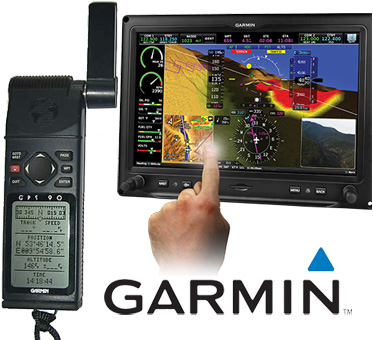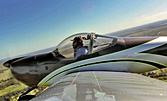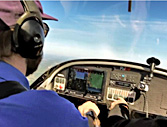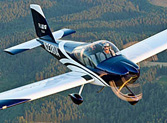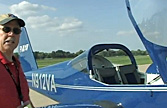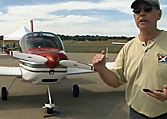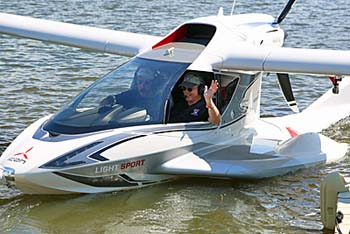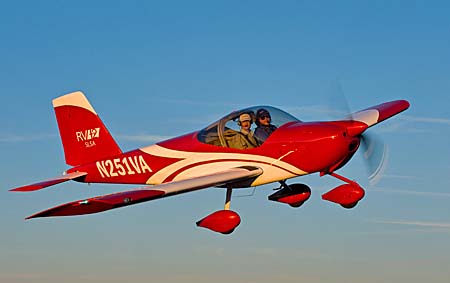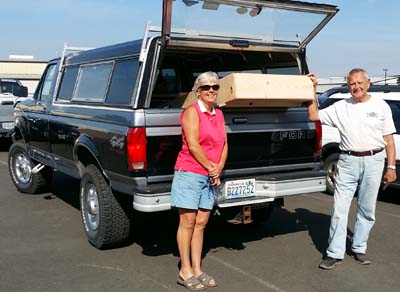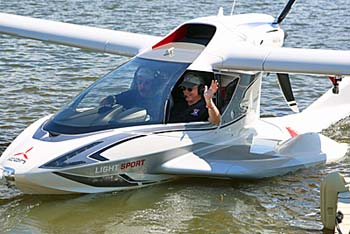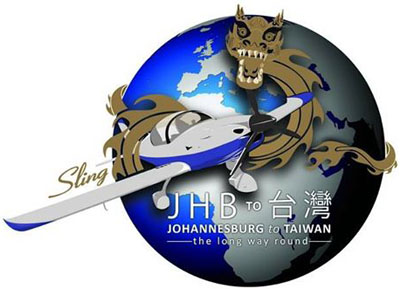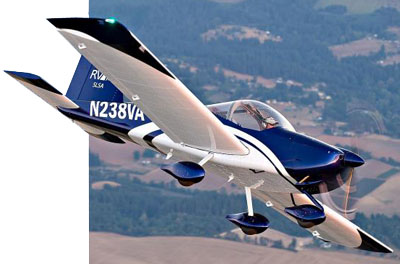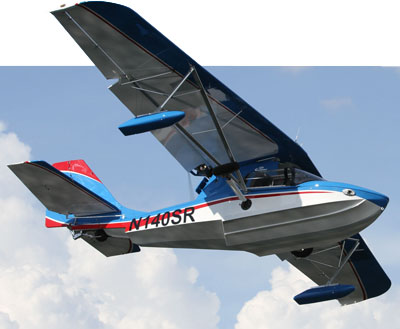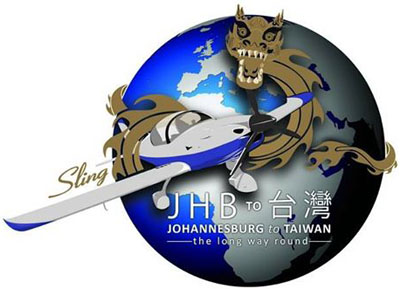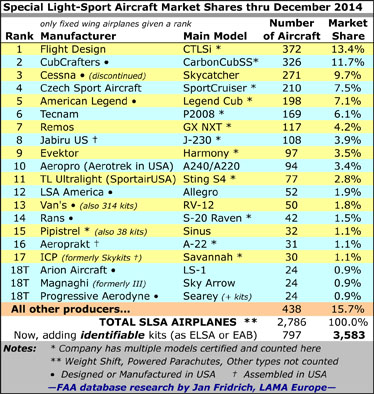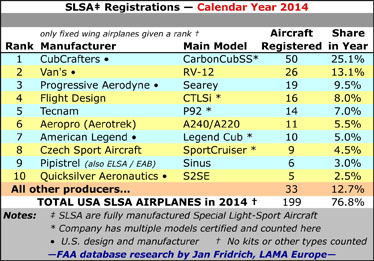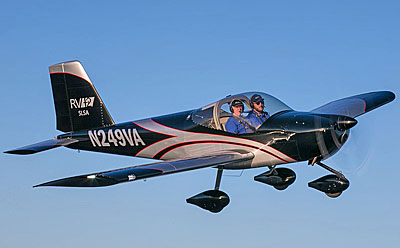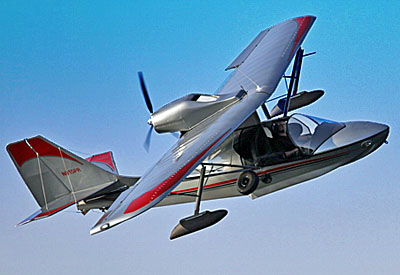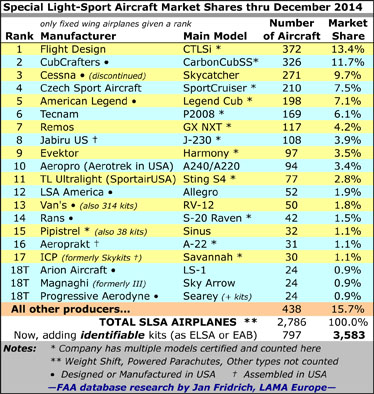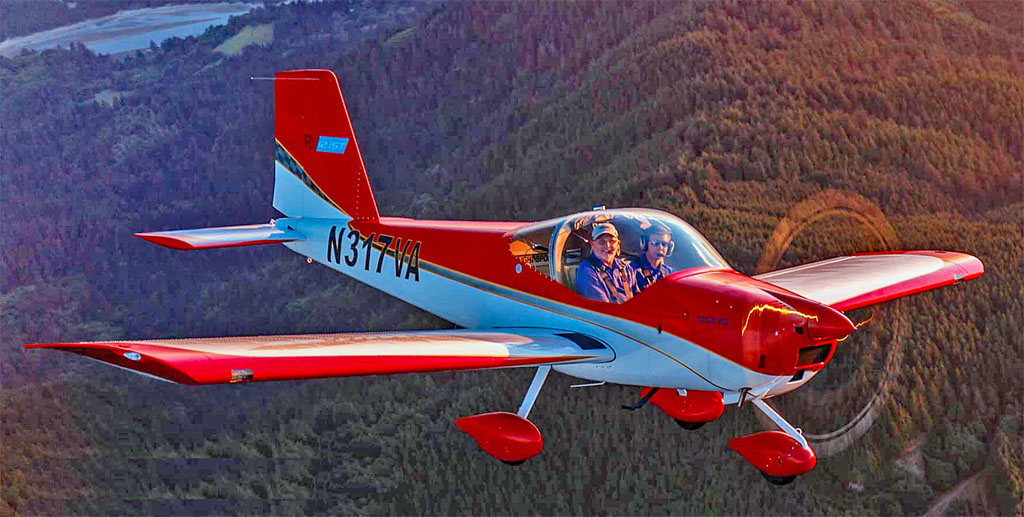
While the world of LSAs is diverse enough that the trials of Van’s Aircraft, which put itself into Chapter 11 bankruptcy protection late last year, aren’t quite the foundational matters they are among the homebuilt crowd, the fact that Van’s is represented with the popular RV-12 and companies that support it are also part of the LSA ecosystem suggests more than a little spillover. In the background, Van’s has been working hard to reset its business and emerge from Chapter 11. And on May 15 the company received good news in the form of an Oregon judge approving the company’s reorganization plan. While it seemed unlikely, there was always the possibility that the court would reject or modify the company’s proposal. In the proposal, Van’s has agreed to repay unsecured creditors 55% of the money they’re owed over three years on top of an “immediate” repayment of $3350 for those in the unsecured creditor class.


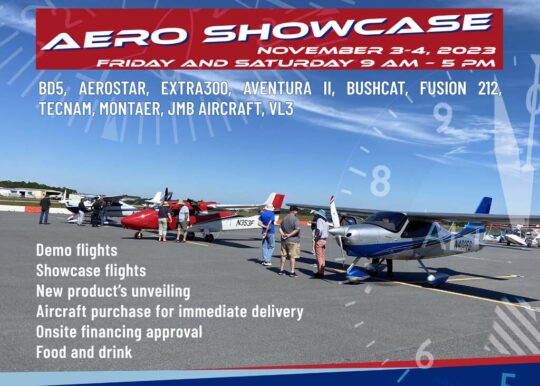 While the DeLand event is still growing compared to those earlier events, it enjoys a beautiful new facility and will present a good selection of airplanes. When I asked attendees at last year's first Aero Showcase, most thought the organizers did credibly well.
The time of year is a perfect choice, judged from studying decades of detailed skydiving jump records — DeLand is a world center for sport parachuting. In addition, the snowbirds have not arrived en masse by early November, so restaurants have few waiting lists and hotel rooms and rental cars are more modestly priced than they will be from January through March.
While the DeLand event is still growing compared to those earlier events, it enjoys a beautiful new facility and will present a good selection of airplanes. When I asked attendees at last year's first Aero Showcase, most thought the organizers did credibly well.
The time of year is a perfect choice, judged from studying decades of detailed skydiving jump records — DeLand is a world center for sport parachuting. In addition, the snowbirds have not arrived en masse by early November, so restaurants have few waiting lists and hotel rooms and rental cars are more modestly priced than they will be from January through March.
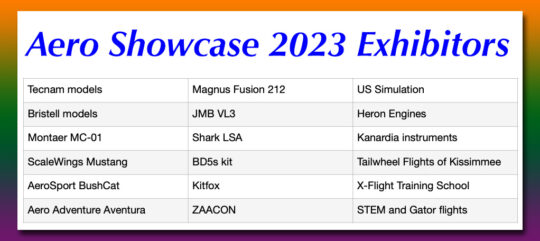 Using the apron out front of the new terminal building makes it easy on visitors and vendors alike. The
Using the apron out front of the new terminal building makes it easy on visitors and vendors alike. The 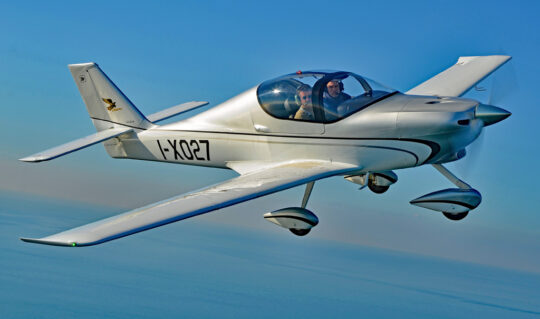
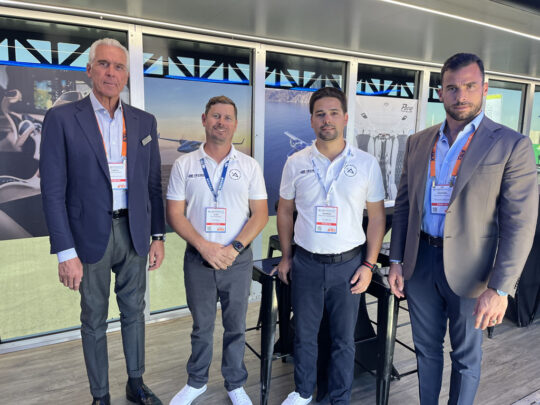
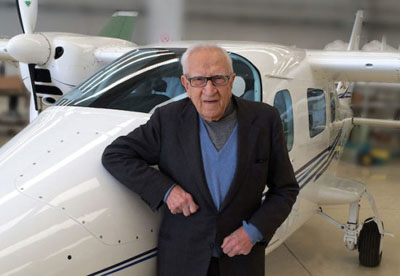
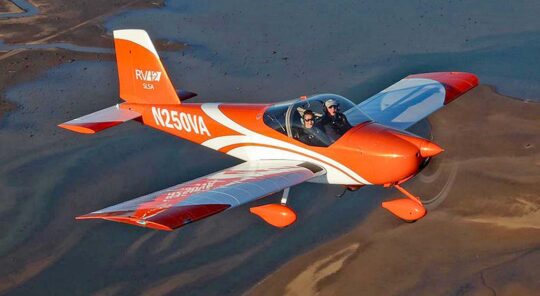 In keeping with a strong reputation built over many years, the news was presented clearly, honestly, and forthrightly. Founder Dick VanGrunsven spoke on behalf of his company.
"Van's currently faces serious cash flow issues, which must be addressed quickly to ensure ongoing operations," began Dick VanGrunsven. "We are confident we can work through this situation, but some changes are required."
In keeping with a strong reputation built over many years, the news was presented clearly, honestly, and forthrightly. Founder Dick VanGrunsven spoke on behalf of his company.
"Van's currently faces serious cash flow issues, which must be addressed quickly to ensure ongoing operations," began Dick VanGrunsven. "We are confident we can work through this situation, but some changes are required."
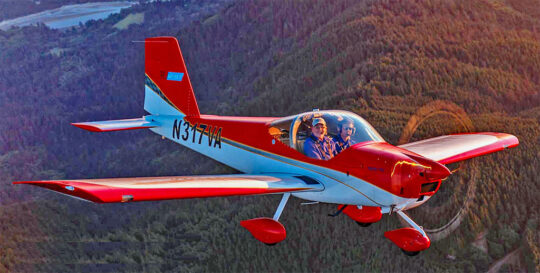 Through mid-November this year, "shipments will be delayed, kit orders will not be processed, and refunds will not be issued. We will be unable to conduct factory tours and demo flights," said Van's.
Van's faced a sort of perfect storm that started when pandemic-driven price increases raised their costs. Then, an overseas contractor used an inferior primer, resulting in aluminum corrosion forming on a large number of kits. Next, Van's had some outsourced laser-cut parts that showed problems. Many builders alerted the company.
Through mid-November this year, "shipments will be delayed, kit orders will not be processed, and refunds will not be issued. We will be unable to conduct factory tours and demo flights," said Van's.
Van's faced a sort of perfect storm that started when pandemic-driven price increases raised their costs. Then, an overseas contractor used an inferior primer, resulting in aluminum corrosion forming on a large number of kits. Next, Van's had some outsourced laser-cut parts that showed problems. Many builders alerted the company.
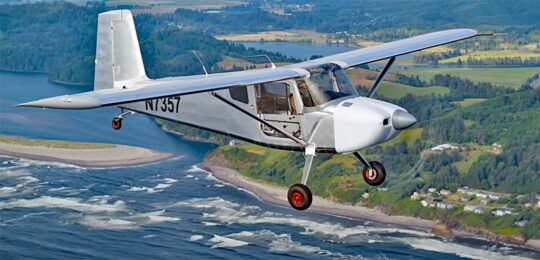
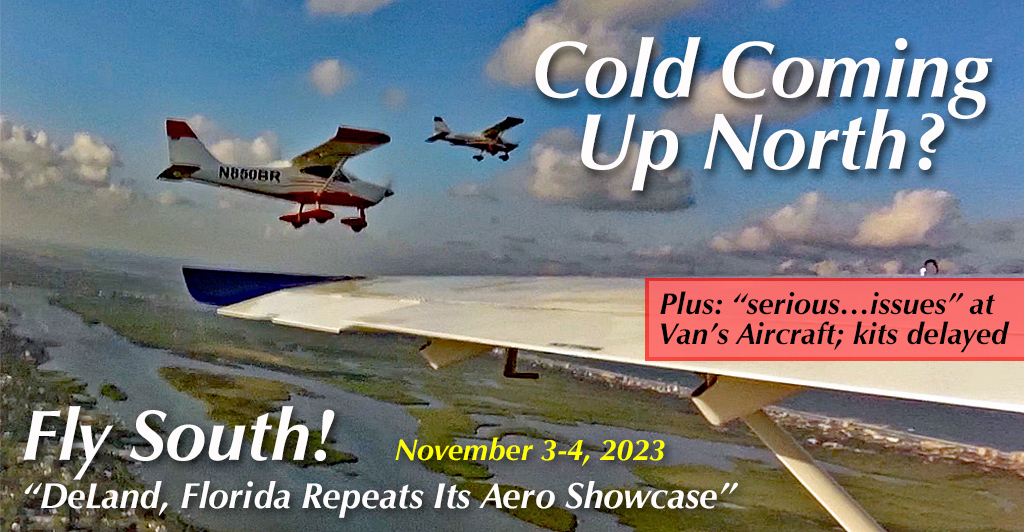
 Maybe pilots are frustrated because FAA has delayed the release of Mosaic. This also happened almost 20 years ago with the Sport Pilot / Light-Sport Aircraft regulation. SP/LSA was anticipated for more than three years after the first announcement.
However, Mosaic is coming and this time we know more about it than most regulations. Why? Because FAA must involve ASTM committee members along the way. (More on this? See at end.
Maybe pilots are frustrated because FAA has delayed the release of Mosaic. This also happened almost 20 years ago with the Sport Pilot / Light-Sport Aircraft regulation. SP/LSA was anticipated for more than three years after the first announcement.
However, Mosaic is coming and this time we know more about it than most regulations. Why? Because FAA must involve ASTM committee members along the way. (More on this? See at end.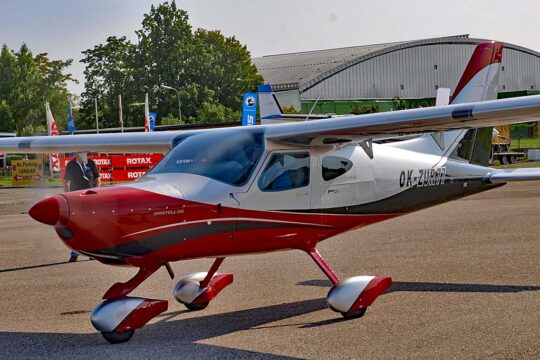
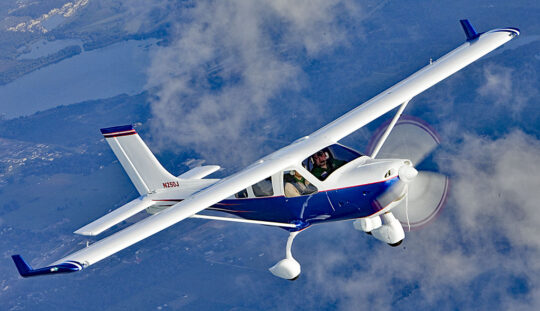 Jabiru
Jabiru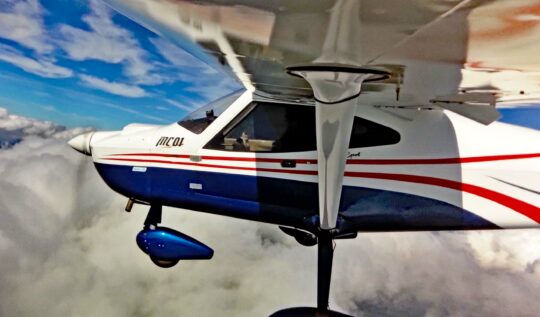 Montaer
Montaer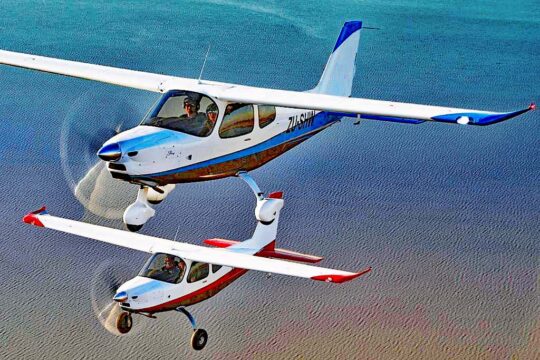 The Airplane Factory
The Airplane Factory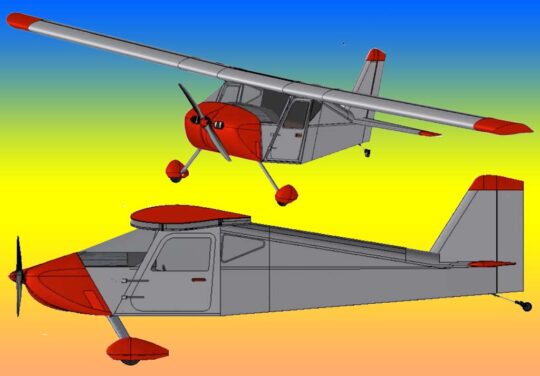
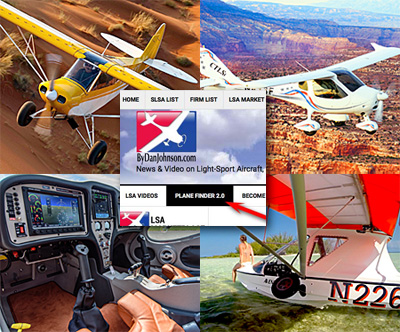 More Available
More Available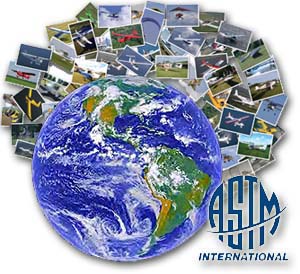 *
*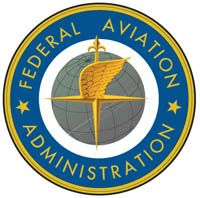 For FAA, this is somewhat new ground. It's unusual for the agency to release this much information about a regulation before they issue it. These things change internally as different FAA departments weigh in, so they usually keep their cards close to the chest until the NPRM (Notice of Proposed Rule Making) is near final form. All this relates only to the airframe.
A different FAA group handles pilot privileges and who gets to fly what size aircraft with how many people on board. They are much less involved with ASTM committee work. That is why we have much less information about what the agency plans regarding pilot certification or flight operations.
For FAA, this is somewhat new ground. It's unusual for the agency to release this much information about a regulation before they issue it. These things change internally as different FAA departments weigh in, so they usually keep their cards close to the chest until the NPRM (Notice of Proposed Rule Making) is near final form. All this relates only to the airframe.
A different FAA group handles pilot privileges and who gets to fly what size aircraft with how many people on board. They are much less involved with ASTM committee work. That is why we have much less information about what the agency plans regarding pilot certification or flight operations.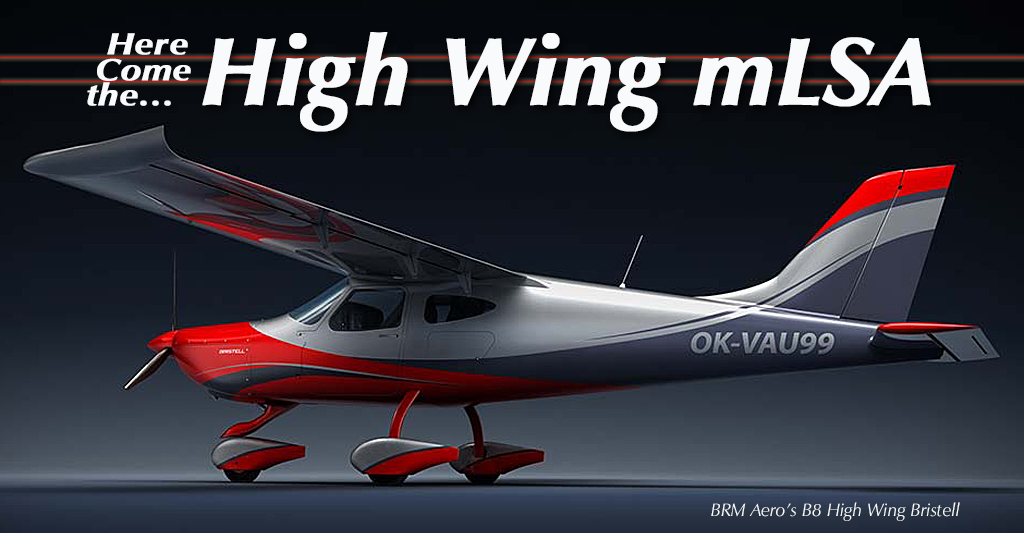
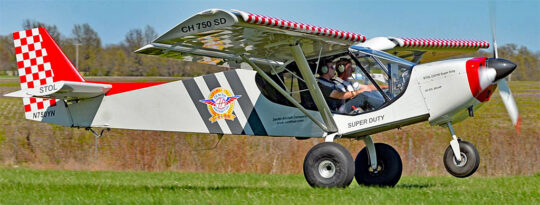
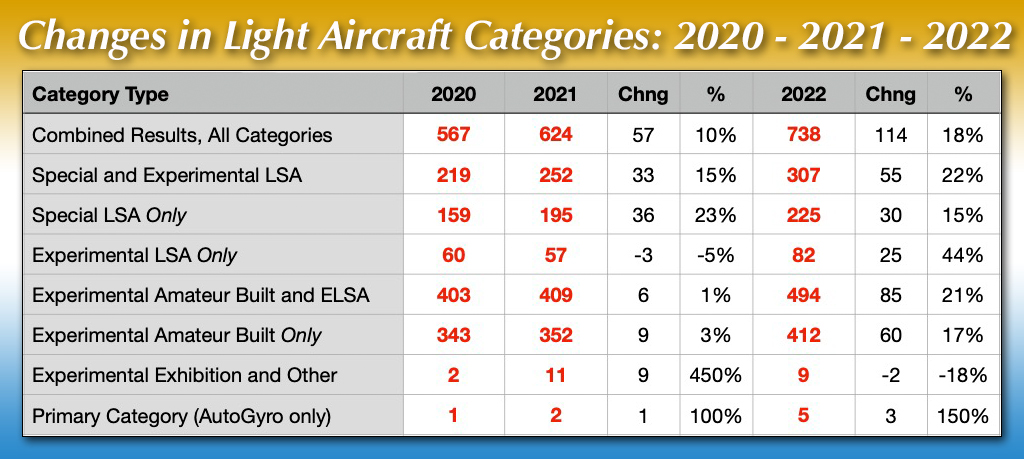
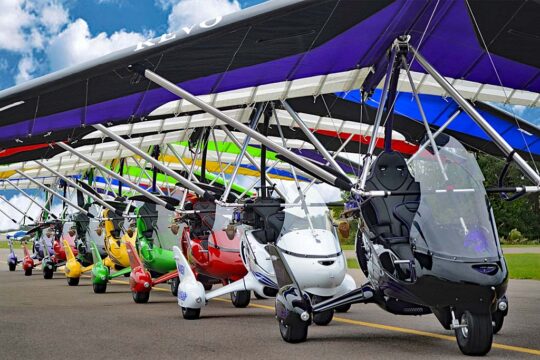
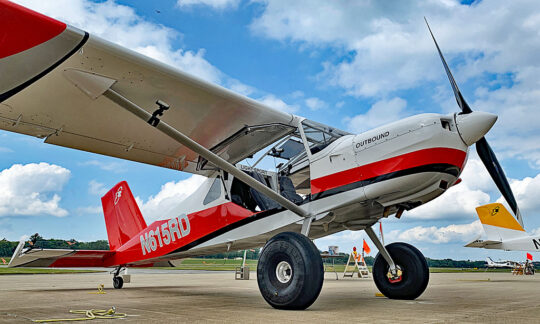
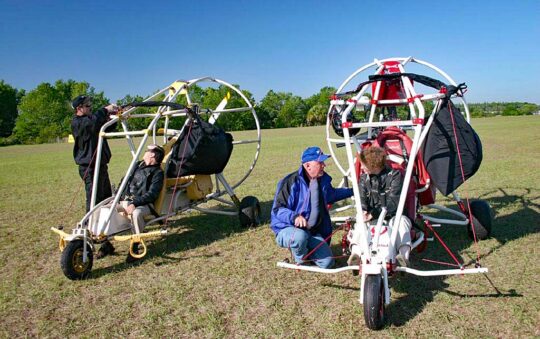
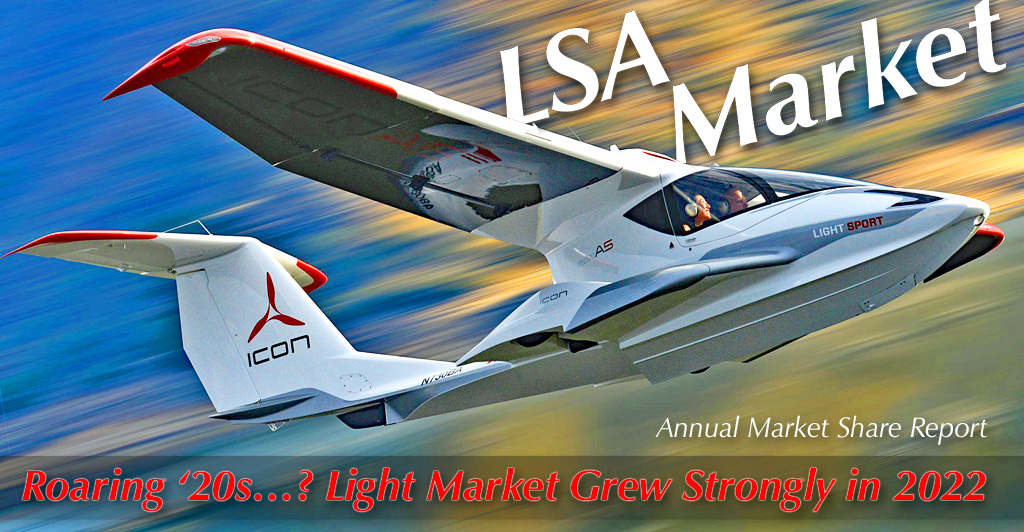
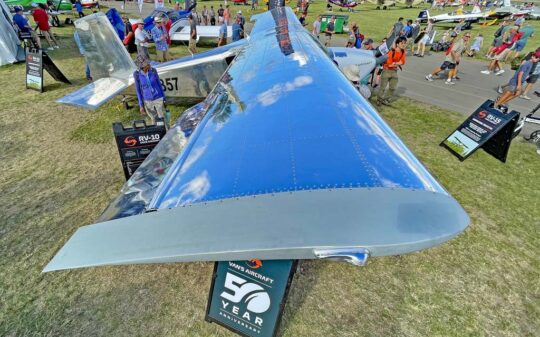 When Van's broke the news that their latest RV-15 model was a high wing, plenty of pilots snapped to attention. This company has produced one winner after another; here is their latest. Its bare aluminum glistened in bright sunlight and drew crowds through every day of Oshkosh 2022.
Will the model join the long line of distinguished RV models as a kit-built aircraft or could the company's first-ever high wing signify something else. After all, Van's did bring
When Van's broke the news that their latest RV-15 model was a high wing, plenty of pilots snapped to attention. This company has produced one winner after another; here is their latest. Its bare aluminum glistened in bright sunlight and drew crowds through every day of Oshkosh 2022.
Will the model join the long line of distinguished RV models as a kit-built aircraft or could the company's first-ever high wing signify something else. After all, Van's did bring  Does Van's know something you don't know? Oh, very probably they know far more than you know but the question digs at who knows what FAA is doing. Here's one company that may have a better handle on that than most others.
Van's president Rian Johnson is the head of the ASTM F37 committee that is working closely with the FAA to formulate standards that will be used when the new breed of LSA come on the market, which I now predict will happen in 2025.
Does Van's know something you don't know? Oh, very probably they know far more than you know but the question digs at who knows what FAA is doing. Here's one company that may have a better handle on that than most others.
Van's president Rian Johnson is the head of the ASTM F37 committee that is working closely with the FAA to formulate standards that will be used when the new breed of LSA come on the market, which I now predict will happen in 2025.
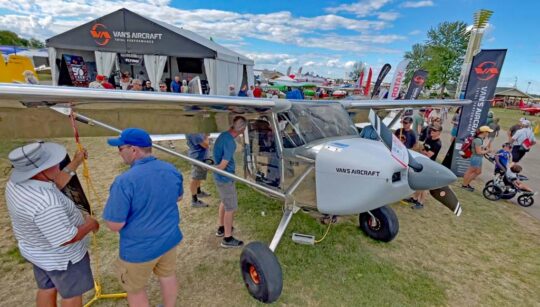 Is Rian well informed in that position? Yes he is. Along with the rest of the committee's mostly-volunteer members, he gets access to information as FAA is willing to provide more. The agency is currently in an ex parte quiet period when it generally does not disclose details about a regulation in development. Yet if the consensus standards are to be ready when the regulation becomes active, ASTM standards writers must have some idea where the rule is headed. Rian is also a smart, thoughtful guy with years on F37 and he is motivated at the helm of Van's.
Is Rian well informed in that position? Yes he is. Along with the rest of the committee's mostly-volunteer members, he gets access to information as FAA is willing to provide more. The agency is currently in an ex parte quiet period when it generally does not disclose details about a regulation in development. Yet if the consensus standards are to be ready when the regulation becomes active, ASTM standards writers must have some idea where the rule is headed. Rian is also a smart, thoughtful guy with years on F37 and he is motivated at the helm of Van's.
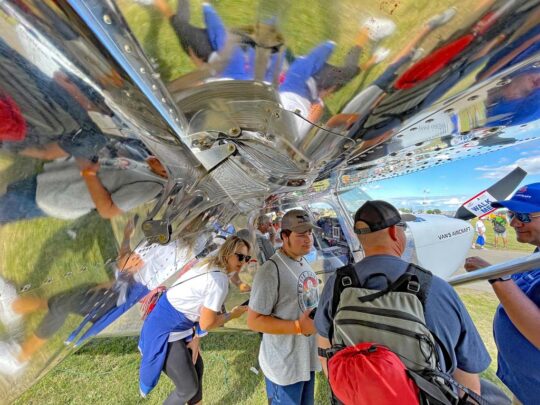 In short, if I was airplane shopping or if I was another manufacturer evaluating what Mosaic will bring… well, I'd pay a lot of attention to any new aircraft coming out of Van's.
Whatever the future may hold, RV-15 is one big, beautiful airplane…
In short, if I was airplane shopping or if I was another manufacturer evaluating what Mosaic will bring… well, I'd pay a lot of attention to any new aircraft coming out of Van's.
Whatever the future may hold, RV-15 is one big, beautiful airplane…
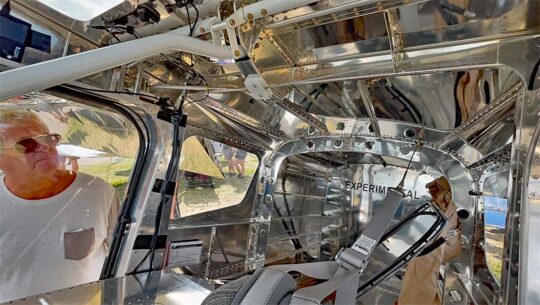 As Van's reported, "We decided RV-15 needed "room to load two full-size mountain bikes in the baggage area without having to completely disassemble them." That should give you a better sense of the interior volume available.
The mission was clearly stated: "The RV-15 prototype is flying. It’s a high-wing airplane. Back-country mission capable. And (of course) 'Total Performance'," the latter summarizing the company's mission statement in two words.
As Van's reported, "We decided RV-15 needed "room to load two full-size mountain bikes in the baggage area without having to completely disassemble them." That should give you a better sense of the interior volume available.
The mission was clearly stated: "The RV-15 prototype is flying. It’s a high-wing airplane. Back-country mission capable. And (of course) 'Total Performance'," the latter summarizing the company's mission statement in two words.
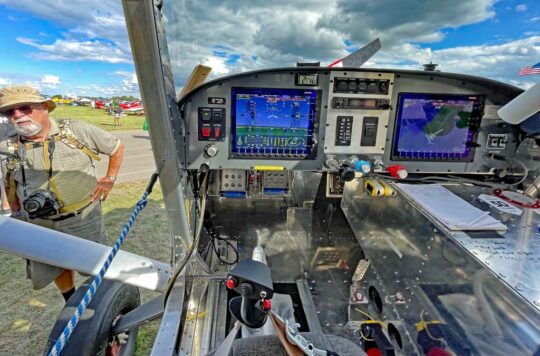 Coming up with a new model that meets an RV expectation must be a daunting exercise for company personnel. RVs are revered for both their performance and their exquisite handling. I've had the pleasure to fly four different Van's models and each exhibited handling that was amazingly similar and simply wonderful in its control responsiveness and crispness. Any new Van's model has some mighty big shoes to fill.
Despite the long and deep experience of this 50-year-old manufacturer, founder Dick VanGrunsven said about the company's first high wing design, "It was really more of a challenge than I think most of us had anticipated going into it." Think about that. This is a company that has created models 1-14 and their 15th was a challenge? That honest statement should tell you that bringing a all-new aircraft to market is a very significant task.
Coming up with a new model that meets an RV expectation must be a daunting exercise for company personnel. RVs are revered for both their performance and their exquisite handling. I've had the pleasure to fly four different Van's models and each exhibited handling that was amazingly similar and simply wonderful in its control responsiveness and crispness. Any new Van's model has some mighty big shoes to fill.
Despite the long and deep experience of this 50-year-old manufacturer, founder Dick VanGrunsven said about the company's first high wing design, "It was really more of a challenge than I think most of us had anticipated going into it." Think about that. This is a company that has created models 1-14 and their 15th was a challenge? That honest statement should tell you that bringing a all-new aircraft to market is a very significant task.
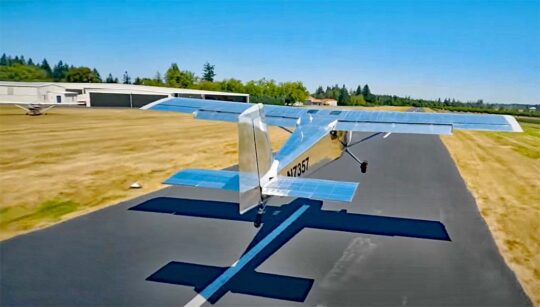 The Oregon company took special pride in this 15th model. "We built almost every single part of this airplane in-house … every piece of metal that's on this airplane we processed ourselves," reported the company on a promotional video.
Drawing on all their considerable talents, the team brought their prototype to Oshkosh to the delight not only of longtime Van's fans but to thousands of others that examined the display model in great detail. The prototype RV-15 will definitely see changes, various of their personnel told Oshkosh attendees checking out the new model. For example, to allow for changes after initial flying, the right seat location was filled with a fuel tank that will end up in the wings. Placing it where a person might sit will permit them to make any desired wing changes faster.
The Oregon company took special pride in this 15th model. "We built almost every single part of this airplane in-house … every piece of metal that's on this airplane we processed ourselves," reported the company on a promotional video.
Drawing on all their considerable talents, the team brought their prototype to Oshkosh to the delight not only of longtime Van's fans but to thousands of others that examined the display model in great detail. The prototype RV-15 will definitely see changes, various of their personnel told Oshkosh attendees checking out the new model. For example, to allow for changes after initial flying, the right seat location was filled with a fuel tank that will end up in the wings. Placing it where a person might sit will permit them to make any desired wing changes faster.
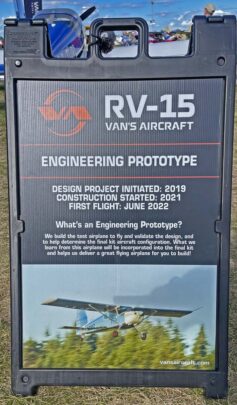 As RV-15 is a prototype, many factors could change but to start, Van's engineers put a 220-horsepower, 4-cylinder Lycoming up front swinging an 80-inch prop. Takeoff roll is back-country short and the big engine should haul at least 900 pounds of useful load, or 600 pounds of payload with 50 gallons of fuel one board. Cruise is targeted at 140 knots. Many of RV-15's final specifications appear to match what experts expect in a Mosaic LSA.
As RV-15 is a prototype, many factors could change but to start, Van's engineers put a 220-horsepower, 4-cylinder Lycoming up front swinging an 80-inch prop. Takeoff roll is back-country short and the big engine should haul at least 900 pounds of useful load, or 600 pounds of payload with 50 gallons of fuel one board. Cruise is targeted at 140 knots. Many of RV-15's final specifications appear to match what experts expect in a Mosaic LSA.
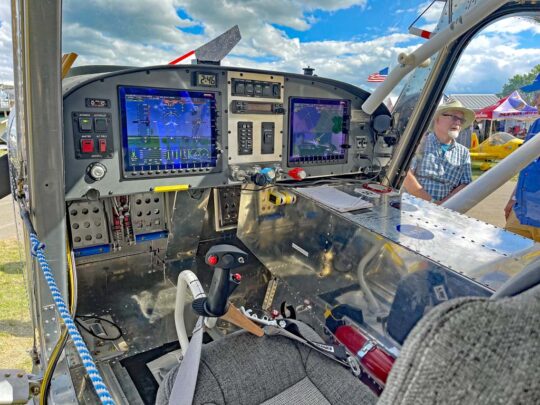 The company is well aware that most pilots licensed in the last few decades have been trained in tricycle-gear aircraft. No question this makes for an easier trainer but nosewheel aircraft are no good in back country …or are they?
Viking Aircraft Engineer leader Jan Eggenfellner has developed the idea further than most in the goal of winning STOL contests. His
The company is well aware that most pilots licensed in the last few decades have been trained in tricycle-gear aircraft. No question this makes for an easier trainer but nosewheel aircraft are no good in back country …or are they?
Viking Aircraft Engineer leader Jan Eggenfellner has developed the idea further than most in the goal of winning STOL contests. His  https://youtu.be/6E798c5smvQ
https://youtu.be/6E798c5smvQ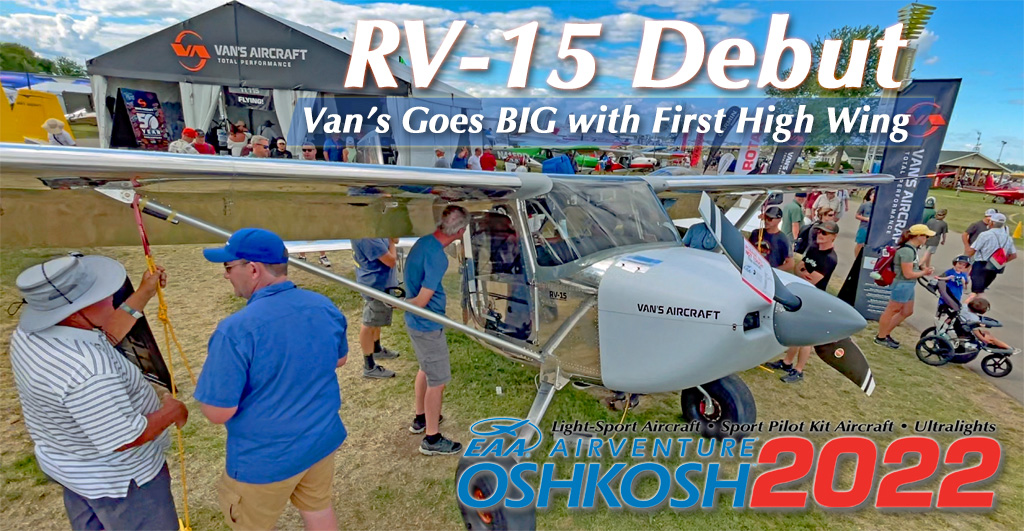
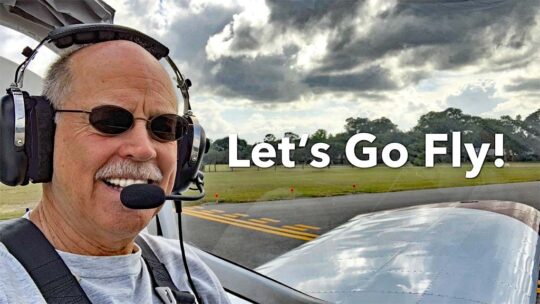 However, I have gotten to fly a small number of airplanes for a higher number of hours. The most recent such experience is with a
However, I have gotten to fly a small number of airplanes for a higher number of hours. The most recent such experience is with a 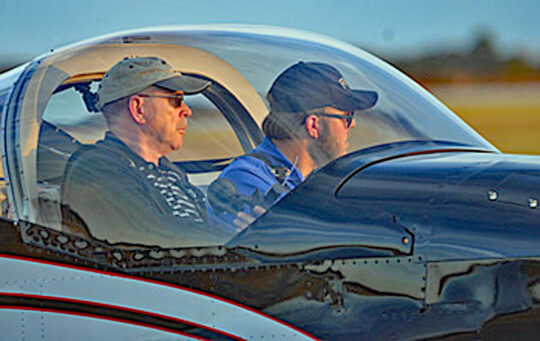 I will let the two videos below provide most of the nuts and bolts details that pilots crave. In the following words, I'll relate some of my experiences and discoveries after flying the -12 for more hours.
To begin, I'm a high wing guy. Most pilots have a clear preference for high or low wing configurations. Some think low wings look "less awkward" and "more streamlined."
They are entitled to that opinion, but for me, the number one reason to fly an aircraft with an engine is visibility… to observe a beautiful landscape unfold below. I've found aerial sightseeing is a common desire among aviators. If so, a low wing gets in the way. RV-12 places the wing sufficiently aft that from either seat you actually do have some downward visibility, but it is not as broad as a high wing design, especially one with cantilevered construction; no wing strut gets in your way.
I will let the two videos below provide most of the nuts and bolts details that pilots crave. In the following words, I'll relate some of my experiences and discoveries after flying the -12 for more hours.
To begin, I'm a high wing guy. Most pilots have a clear preference for high or low wing configurations. Some think low wings look "less awkward" and "more streamlined."
They are entitled to that opinion, but for me, the number one reason to fly an aircraft with an engine is visibility… to observe a beautiful landscape unfold below. I've found aerial sightseeing is a common desire among aviators. If so, a low wing gets in the way. RV-12 places the wing sufficiently aft that from either seat you actually do have some downward visibility, but it is not as broad as a high wing design, especially one with cantilevered construction; no wing strut gets in your way.
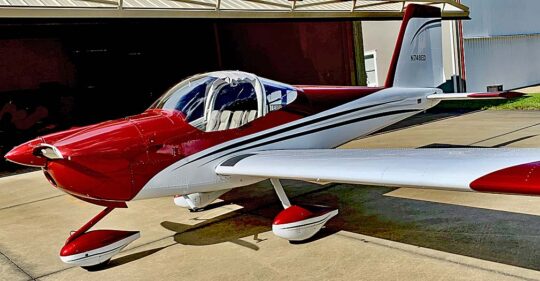 High wing airplanes are usually much easier to enter, a factor for older, less flexible pilots. Yet among low wing designs, RV-12 is easier as you enter from the front of the wing (see step in a nearby photo). You can use structure to help climb up on the wing and once you get to that point you can simply step onto the floor. You don't have to step in the seat as on some low wing aircraft. Most folks don't like having to do that and some low wing owners have a towel to put on the seat to keep dirty shoes off of it.
High wing airplanes are usually much easier to enter, a factor for older, less flexible pilots. Yet among low wing designs, RV-12 is easier as you enter from the front of the wing (see step in a nearby photo). You can use structure to help climb up on the wing and once you get to that point you can simply step onto the floor. You don't have to step in the seat as on some low wing aircraft. Most folks don't like having to do that and some low wing owners have a towel to put on the seat to keep dirty shoes off of it.
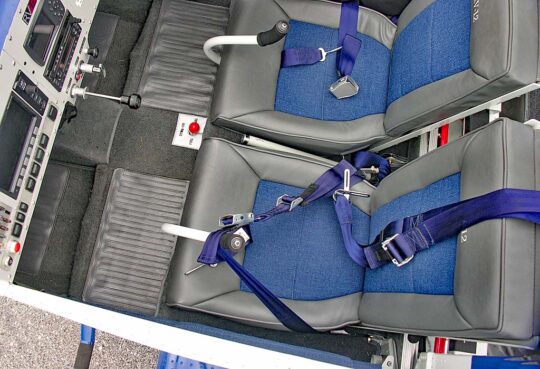
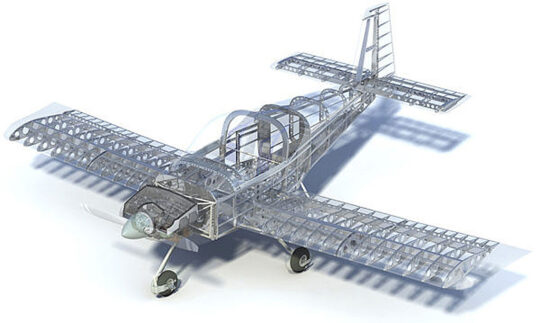
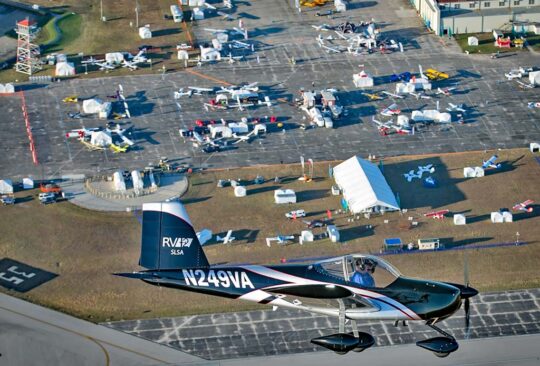
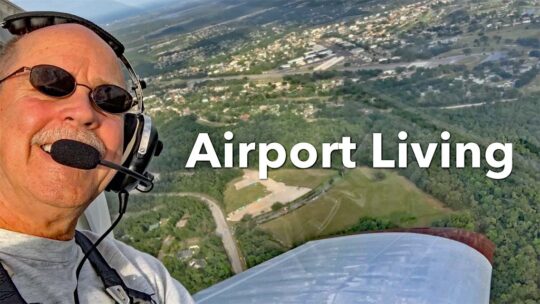 That's enough about me and what I think of RV-12. Check out these two videos and learn more about Van's terrific RV-12. Happy flying!
Tail winds, everyone!
The nearby photo shows me on downwind for runway 6 at
That's enough about me and what I think of RV-12. Check out these two videos and learn more about Van's terrific RV-12. Happy flying!
Tail winds, everyone!
The nearby photo shows me on downwind for runway 6 at 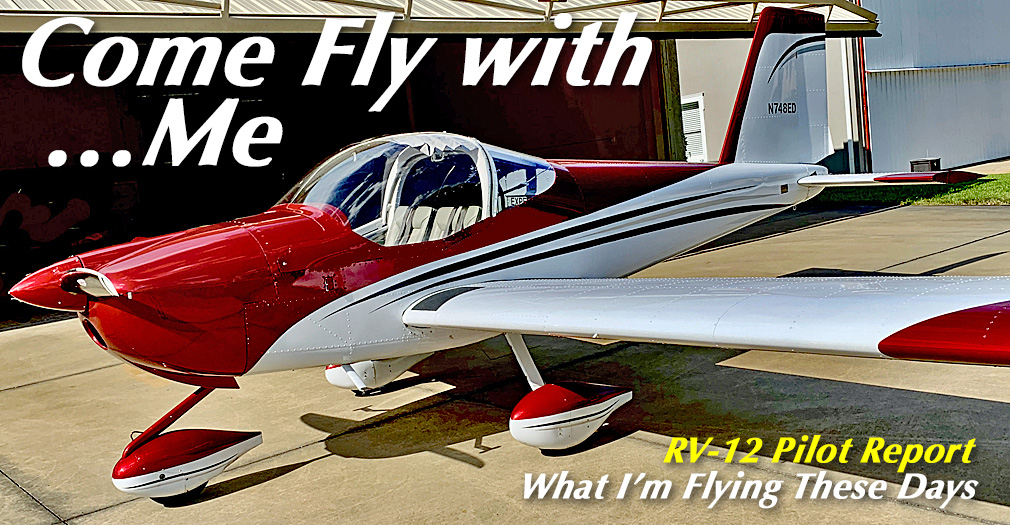
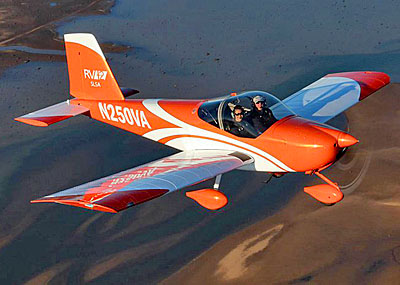 If you follow light aviation intently as many readers do, knowing what aircraft and subgroups (within LSA and SP kits
If you follow light aviation intently as many readers do, knowing what aircraft and subgroups (within LSA and SP kits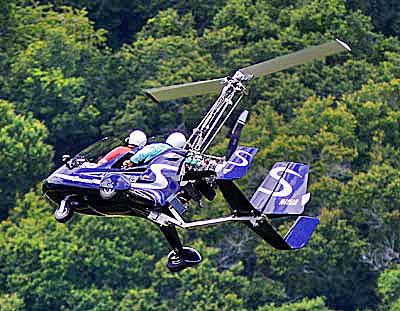 Why? We don't claim to have all the answers but regular surveying of exhibitors at airshows revealed that many sellers say, "The market is good. People are buying." Of course, this is anecdotal not scientific but we heard it from enough vendors to believe they're feeling good about their enterprises. Many pilots backed up this finding with their own, personal assessment.
If you want to do your own analysis, you certainly can using our completely free-of-charge
Why? We don't claim to have all the answers but regular surveying of exhibitors at airshows revealed that many sellers say, "The market is good. People are buying." Of course, this is anecdotal not scientific but we heard it from enough vendors to believe they're feeling good about their enterprises. Many pilots backed up this finding with their own, personal assessment.
If you want to do your own analysis, you certainly can using our completely free-of-charge 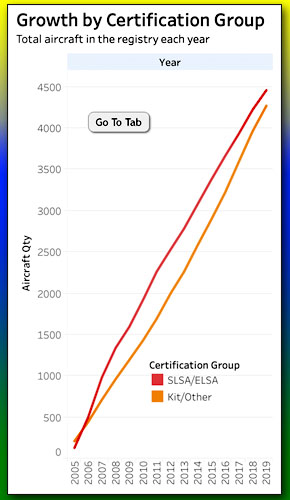 This is the first time you've seen this because earlier, we segmented SLSA from ELSA from SP kits. This made it appear kits were growing faster than the LSA groups. In fact, they are nearly matched with kit-built aircraft.
Viewing all light aircraft as a group, Steve noted, "The same six brands continue to lead the pack." He refers to the full fleet of light aircraft a Sport Pilot may fly — led by kit-built aircraft producers: Zenair/Zenith, Van's, Rans, Sonex, and Kitfox plus SLSA builder,
This is the first time you've seen this because earlier, we segmented SLSA from ELSA from SP kits. This made it appear kits were growing faster than the LSA groups. In fact, they are nearly matched with kit-built aircraft.
Viewing all light aircraft as a group, Steve noted, "The same six brands continue to lead the pack." He refers to the full fleet of light aircraft a Sport Pilot may fly — led by kit-built aircraft producers: Zenair/Zenith, Van's, Rans, Sonex, and Kitfox plus SLSA builder, 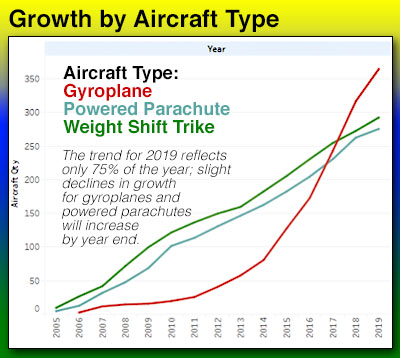 Using
Using 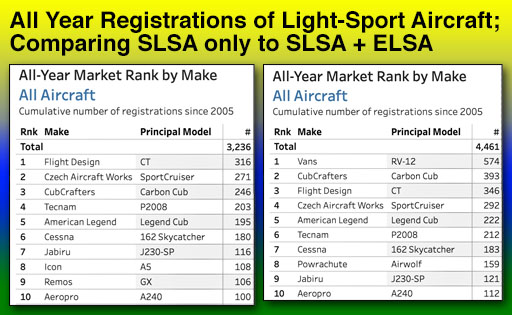 However, fixed wing continue to be, by far, the biggest group of LSA (partly as very few kit-built aircraft are "alternative" types).
Among Special (fully built) LSA, Flight Design continues atop the ranking. They enjoyed a phenomenal start back in 2005-2006 and have never lost their leadership position. American Legend, Czech Sport Aircraft, CubCrafters, Tecnam, and
However, fixed wing continue to be, by far, the biggest group of LSA (partly as very few kit-built aircraft are "alternative" types).
Among Special (fully built) LSA, Flight Design continues atop the ranking. They enjoyed a phenomenal start back in 2005-2006 and have never lost their leadership position. American Legend, Czech Sport Aircraft, CubCrafters, Tecnam, and 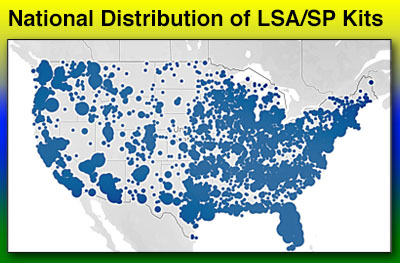 As we head into the final quarter of 2019 — and the final LSA show of the year, the
As we head into the final quarter of 2019 — and the final LSA show of the year, the 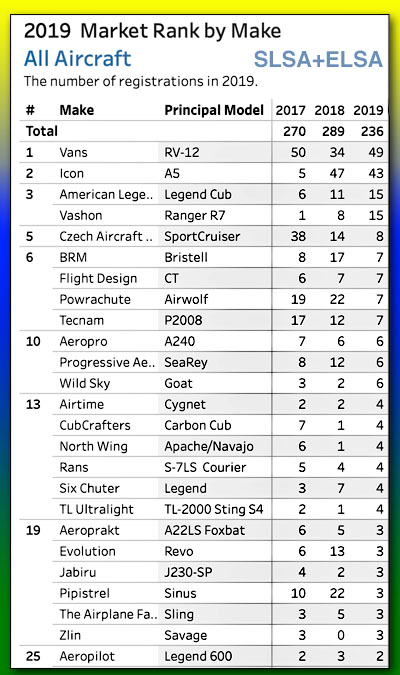
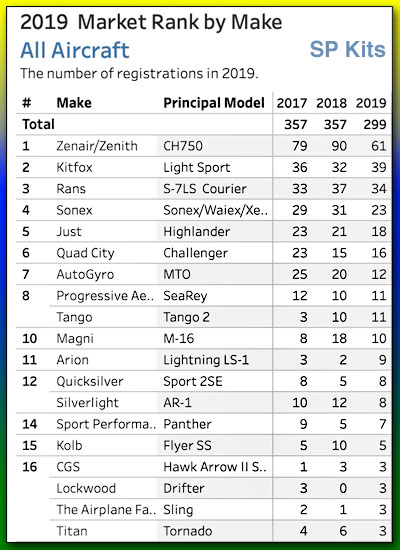

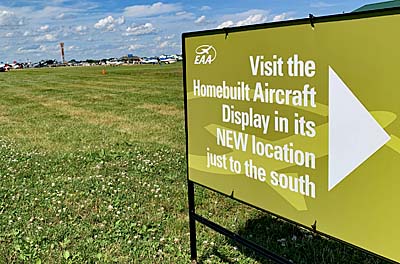 Cruising the grounds at Oshkosh, looking for aircraft to report, I looked around the all-new Homebuilt Area. This group has long occupied a fairly spacious grassy area in a good location south of the Warbirds Area, said to be Oshkosh's biggest draw. However, for 2019 EAA relocated the area bringing vendors closer to the densest customer traffic, which may encourage more attendees to examine their aircraft. Several exhibitors I spoke to seemed content with the new location.
The new area had the usual collection of vendors, many of which qualify as Sport Pilot kits that can be flown with the certificate that needs no aviation medical. Quarters looked rather tight compared to past years, with airplanes somewhat shoehorned into the allocated space. Like all changes — and EAA has made a huge number of them in the fifty years the event has been held in Oshkosh — visitors and vendors will adapt quickly enough and soon we'll forget the old "North 40" where homebuilt kits once displayed.
As I strolled through the new area, I passed by
Cruising the grounds at Oshkosh, looking for aircraft to report, I looked around the all-new Homebuilt Area. This group has long occupied a fairly spacious grassy area in a good location south of the Warbirds Area, said to be Oshkosh's biggest draw. However, for 2019 EAA relocated the area bringing vendors closer to the densest customer traffic, which may encourage more attendees to examine their aircraft. Several exhibitors I spoke to seemed content with the new location.
The new area had the usual collection of vendors, many of which qualify as Sport Pilot kits that can be flown with the certificate that needs no aviation medical. Quarters looked rather tight compared to past years, with airplanes somewhat shoehorned into the allocated space. Like all changes — and EAA has made a huge number of them in the fifty years the event has been held in Oshkosh — visitors and vendors will adapt quickly enough and soon we'll forget the old "North 40" where homebuilt kits once displayed.
As I strolled through the new area, I passed by 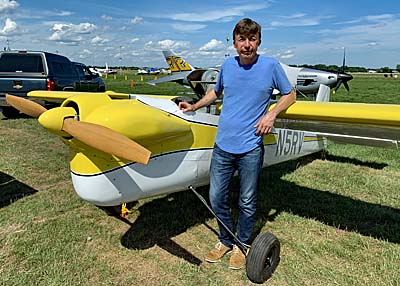 Truthfully, Van's Aircraft Vice President and Chief Engineer Rian Johnson is only displaying a personal project. RV-5 was never offered for sale and won't be now. Yet the light aircraft enthusiast in me noticed it right away. Probably like most other attendees I wondered, "What is that?
"Of course, we want people to focus on our current popular kits such as RV-8, -10, and -12," quickly added, "but I thought Oshkosh visitors might enjoy seeing a bit of Van's history." RV-5 dates way back to 1975 when it was built by Dick VanGrunsven and EAA 105 chapter members to evaluate several design concepts. Among the goals of the group, Rian explained, were light weight and fuel efficiency. RV-5 was never intended for production.
RV-5's wings swing back over the flat aft fuselage for easier transport or more space-efficient storage. No control linkages need be disconnected thanks to a clever center-mounted mixer that stays in place when folding the wings.
Truthfully, Van's Aircraft Vice President and Chief Engineer Rian Johnson is only displaying a personal project. RV-5 was never offered for sale and won't be now. Yet the light aircraft enthusiast in me noticed it right away. Probably like most other attendees I wondered, "What is that?
"Of course, we want people to focus on our current popular kits such as RV-8, -10, and -12," quickly added, "but I thought Oshkosh visitors might enjoy seeing a bit of Van's history." RV-5 dates way back to 1975 when it was built by Dick VanGrunsven and EAA 105 chapter members to evaluate several design concepts. Among the goals of the group, Rian explained, were light weight and fuel efficiency. RV-5 was never intended for production.
RV-5's wings swing back over the flat aft fuselage for easier transport or more space-efficient storage. No control linkages need be disconnected thanks to a clever center-mounted mixer that stays in place when folding the wings.
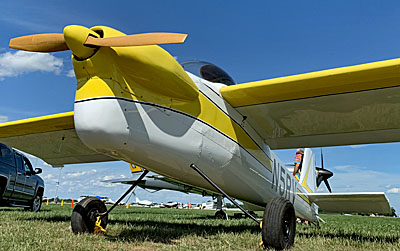 "Some years back, I was up in a loft storage area looking for something and uncovered a dusty airframe. When I asked Dick about it, he asked, 'Do you want it?' Be careful what you ask for," Rian noted although he did eventually tackle the restoration project marrying the airframe of RV-5 to the canopy of RV-2.
The single seat design is small. A very lean Rian said he weighs 138 pounds and RV-5 is even somewhat snug for him so this is not an aircraft for pilots who tip the scales beyond FAA's 170-pound reference weight. That hardly matters, however, as this is not an active project for anyone but Rian.
Needing only 40 horsepower to perform enthusiastically RV-5 is powered by a
"Some years back, I was up in a loft storage area looking for something and uncovered a dusty airframe. When I asked Dick about it, he asked, 'Do you want it?' Be careful what you ask for," Rian noted although he did eventually tackle the restoration project marrying the airframe of RV-5 to the canopy of RV-2.
The single seat design is small. A very lean Rian said he weighs 138 pounds and RV-5 is even somewhat snug for him so this is not an aircraft for pilots who tip the scales beyond FAA's 170-pound reference weight. That hardly matters, however, as this is not an active project for anyone but Rian.
Needing only 40 horsepower to perform enthusiastically RV-5 is powered by a 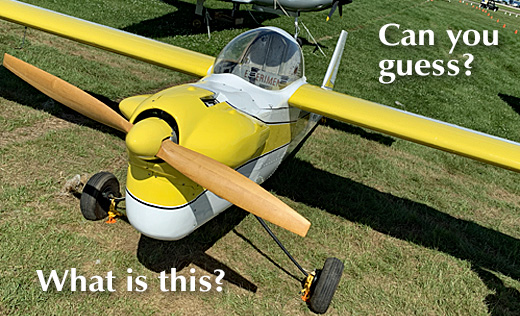
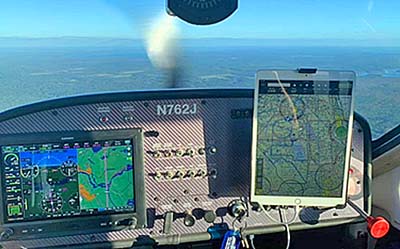
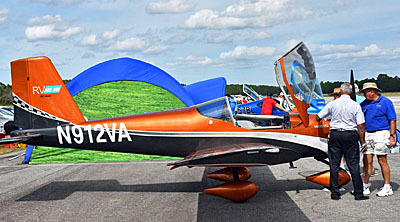
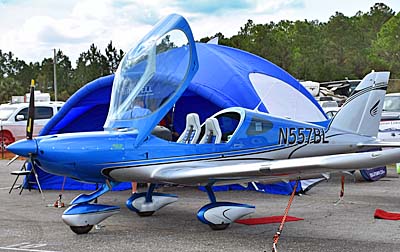
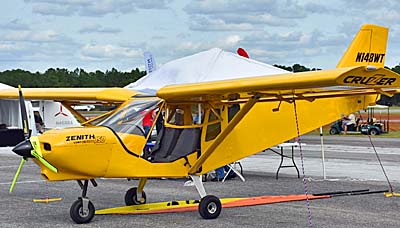
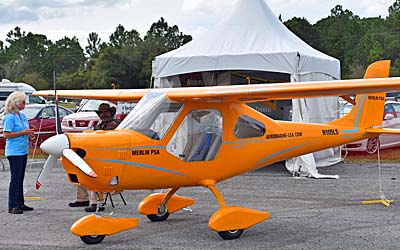
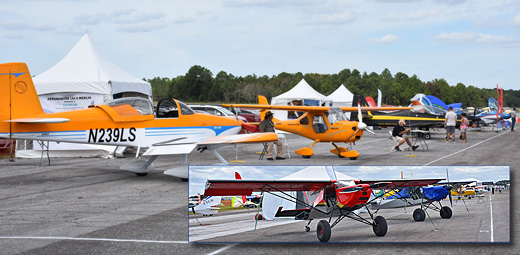
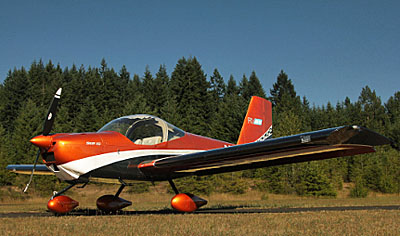 American producers were the kings of kits, an effort that calls for good assembly instructions and technical support plus groups that can help each other. These two activities represent night and day differences.
However, in the years since the regulation arrived, American companies have significantly caught up.
Indeed, as September and the 14th anniversary of the SP/LSA rule arrived, Van's released news of a major change.
"
American producers were the kings of kits, an effort that calls for good assembly instructions and technical support plus groups that can help each other. These two activities represent night and day differences.
However, in the years since the regulation arrived, American companies have significantly caught up.
Indeed, as September and the 14th anniversary of the SP/LSA rule arrived, Van's released news of a major change.
"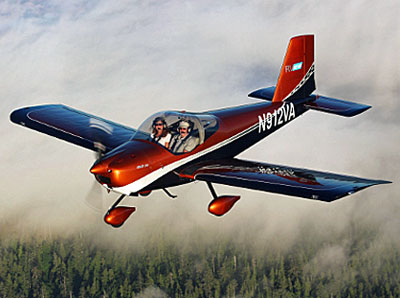 As many readers know, nearby Synergy Air was Van’s assembly partner for several years. "[They have] done a tremendous job for Van’s and our customers," stated Van's. Synergy Air will continue to work with Van's but will return to concentrate on builder-assist activities.
Van's issued a series of questions and answers to address this fairly significant change.
As many readers know, nearby Synergy Air was Van’s assembly partner for several years. "[They have] done a tremendous job for Van’s and our customers," stated Van's. Synergy Air will continue to work with Van's but will return to concentrate on builder-assist activities.
Van's issued a series of questions and answers to address this fairly significant change.
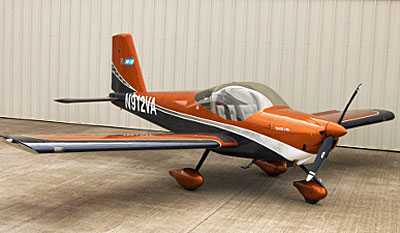 The natural evolution and success of both businesses has brought us to where we are today. Synergy has become even more focused on the business of assisting Van’s Aircraft’s customers in building their RV airplanes. As the SLSA program has matured, Van’s has expanded its workforce and capabilities to include marketing and aircraft construction. This change represents the next logical step in both companies’ successful business growth.
The natural evolution and success of both businesses has brought us to where we are today. Synergy has become even more focused on the business of assisting Van’s Aircraft’s customers in building their RV airplanes. As the SLSA program has matured, Van’s has expanded its workforce and capabilities to include marketing and aircraft construction. This change represents the next logical step in both companies’ successful business growth.
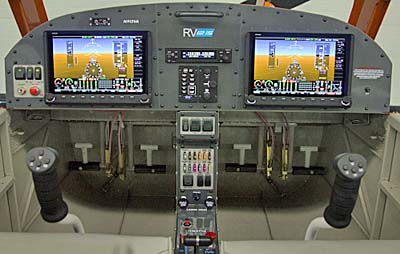 You can and should expect excellent quality from a business that continuously strives to improve its products and services. Van's approach is to delivering the highest quality products. Our aircraft assembly and delivery department — a dedicated team focused on just that portion of our business — is staffed by experts with years of RV-12 building experience. Van's will, as always, strive to adopt and leverage new, innovative processes and technology to drive its ongoing quality program.
You can and should expect excellent quality from a business that continuously strives to improve its products and services. Van's approach is to delivering the highest quality products. Our aircraft assembly and delivery department — a dedicated team focused on just that portion of our business — is staffed by experts with years of RV-12 building experience. Van's will, as always, strive to adopt and leverage new, innovative processes and technology to drive its ongoing quality program.
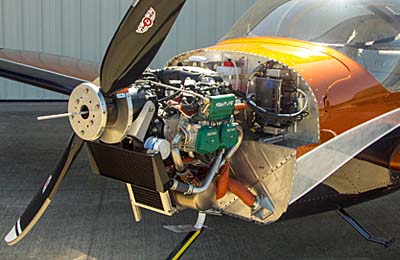 No, not at all. This change is the result of mutual successes, and represents a natural and positive evolution of both businesses. It will enable both companies to deliver even more, both in partnership and separately.
No, not at all. This change is the result of mutual successes, and represents a natural and positive evolution of both businesses. It will enable both companies to deliver even more, both in partnership and separately.
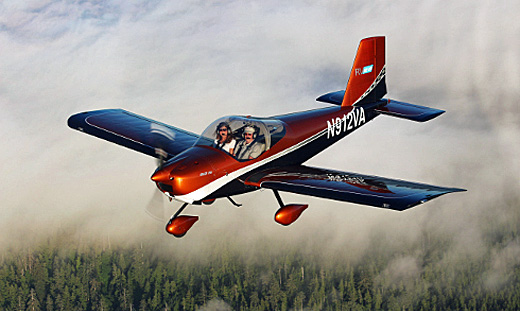
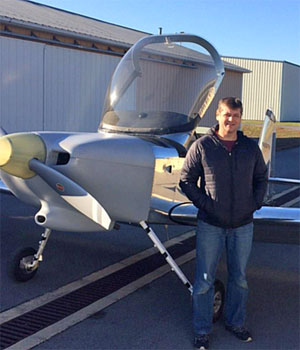 According to a
According to a 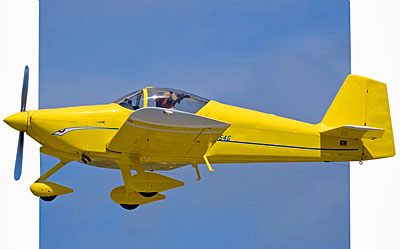
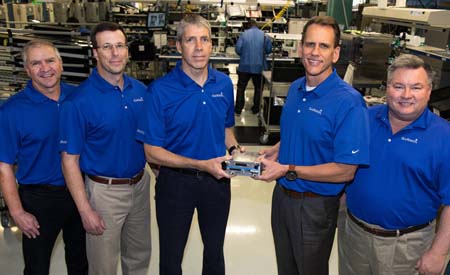 “Since our inception over 28 years ago, Garmin has been committed to providing superior products that are known for their innovation, reliability and intuitive design,” said Phil Straub, Garmin executive vice president, managing director of aviation. “This milestone is a testament to our long-established commitment to making significant investments in research and development, as well as the hard work and dedication of thousands of passionate Garmin team members that I have the pleasure of working with every day.”
“As we celebrate this exciting accomplishment, I am very proud of how our teams have managed such significant growth, while maintaining the culture of our company as our founders set forth,” said Carl Wolf, vice president of aviation marketing and sales. “The breadth and depth of our certified aviation product line has expanded greatly over the years, allowing us to develop new markets for Garmin. This incredible milestone doesn’t even include the hundreds of thousands of portable and other non-certified products that our customers use every day. On behalf of Garmin, I wish to express my utmost gratitude to our loyal customers, our dealers and the aircraft manufacturers all around the globe, who have helped us to accomplish such a tremendous achievement in Garmin’s history.”
“Since our inception over 28 years ago, Garmin has been committed to providing superior products that are known for their innovation, reliability and intuitive design,” said Phil Straub, Garmin executive vice president, managing director of aviation. “This milestone is a testament to our long-established commitment to making significant investments in research and development, as well as the hard work and dedication of thousands of passionate Garmin team members that I have the pleasure of working with every day.”
“As we celebrate this exciting accomplishment, I am very proud of how our teams have managed such significant growth, while maintaining the culture of our company as our founders set forth,” said Carl Wolf, vice president of aviation marketing and sales. “The breadth and depth of our certified aviation product line has expanded greatly over the years, allowing us to develop new markets for Garmin. This incredible milestone doesn’t even include the hundreds of thousands of portable and other non-certified products that our customers use every day. On behalf of Garmin, I wish to express my utmost gratitude to our loyal customers, our dealers and the aircraft manufacturers all around the globe, who have helped us to accomplish such a tremendous achievement in Garmin’s history.”
